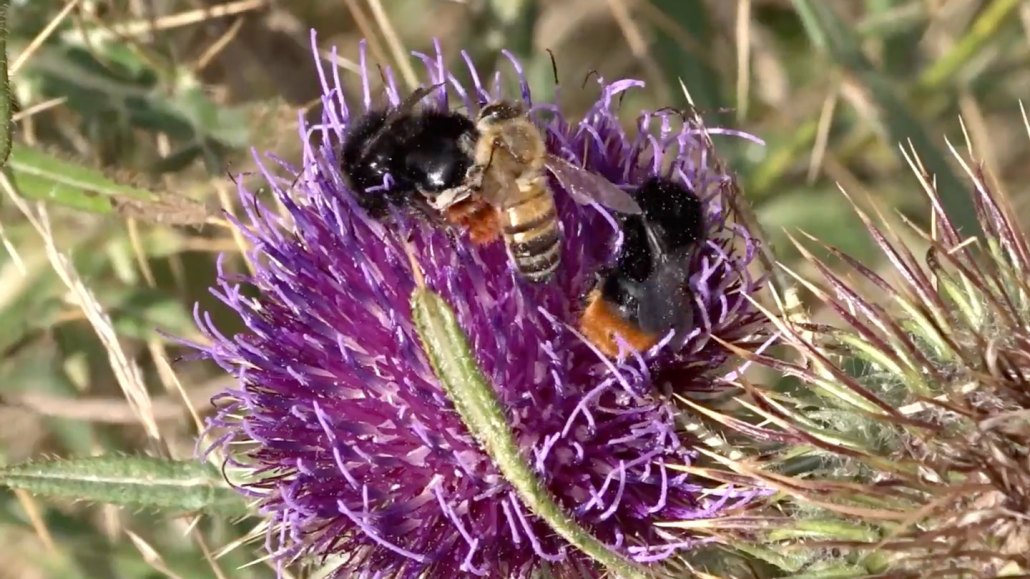Pollen-seeking honeybees sometimes turn to theft
New recordings of honeybees stealing from bumblebees help explain their looting

Honeybees need protein-packed pollen to sustain their hives. They need so much that they’ll sometimes steal it off the backs of bumblebees, as seen here.
Londei and G. Marzi/Apidologie 2023
Share this:
- Share via email (Opens in new window) Email
- Click to share on Facebook (Opens in new window) Facebook
- Click to share on X (Opens in new window) X
- Click to share on Pinterest (Opens in new window) Pinterest
- Click to share on Reddit (Opens in new window) Reddit
- Share to Google Classroom (Opens in new window) Google Classroom
- Click to print (Opens in new window) Print
Some honeybees rely on shady tactics to get pollen. They may steal the prized food from other bees.
Such pollen theft has been witnessed before in the United States. Now, scientists in Italy report seeing honeybees filching pollen off the backs of bumblebees.
Indeed, they have this bee-on-bee thievery on video. And they detail the behavior in the latest issue of Apidologie.
“Honeybees are well known as pollen pigs,” says Avery Russell. So stealing pollen from bumblebees, he says, “doesn’t seem like a far stretch.” A biologist at Missouri State University in Springfield, Russell did not take part in the new study.
A crime of convenience
Tiziano Londei and Guiliana Marzi are naturalists in Milan, Italy. In 2019, they took a summer trip to Mount Antola. It’s in Italy’s northern region of Liguria. There, they recorded video of what they thought were honeybees (Apis mellifera) trying to push bumblebees off the bloom of a woolly thistle. Then they took a closer look at the video. This wasn’t just competition for food, they realized. It was flat-out robbery!
As the bumblebees (Bombus lapidarius) collected nectar and pollen from the flowers, some pollen grains stuck to their hairy bodies. The honeybees sidled up to snag this pollen. The bandits targeted male bumbles more often than the females. That could be because the males seemed less bothered by the looting. None of the bumblebees reacted with aggression.
Londei and Marzi wondered if such pollen theft was common among bees. So they went back to the scene twice in the following three years. They also observed bees at two other sites about 25 kilometers (15.5 miles) away.
The team did not see any honeybees stealing from bumblebees at the two new sites. But honeybees at the first site continued their pollen looting year after year. In 2021, for instance, honeybees collected pollen from only three out of the 31 flowers tagged for observation. Yet they stole pollen from 28 of 66 available bumblebees.
Next, the researchers studied how the sites differed. They suspect honeybees turn to theft when it’s hard to get pollen from flowers but there are plenty of other bees around. Collecting pollen from the woolly thistle flower, for instance, is challenging for a honeybee.
Scientists had previously observed honeybee theft of pollen only in North America. It was first seen in Kansas and then later in California and Indiana. The new sighting in Italy suggests this criminal behavior could be a global trend.
Russell would like to know whether pollen theft has a negative impact on bumblebees. Or on the flowers they pollinate. He’s also curious if other bee species ever steal pollen. He notes, “We do notice that in the hive, bumblebees will nibble on each other’s pollen baskets.”







